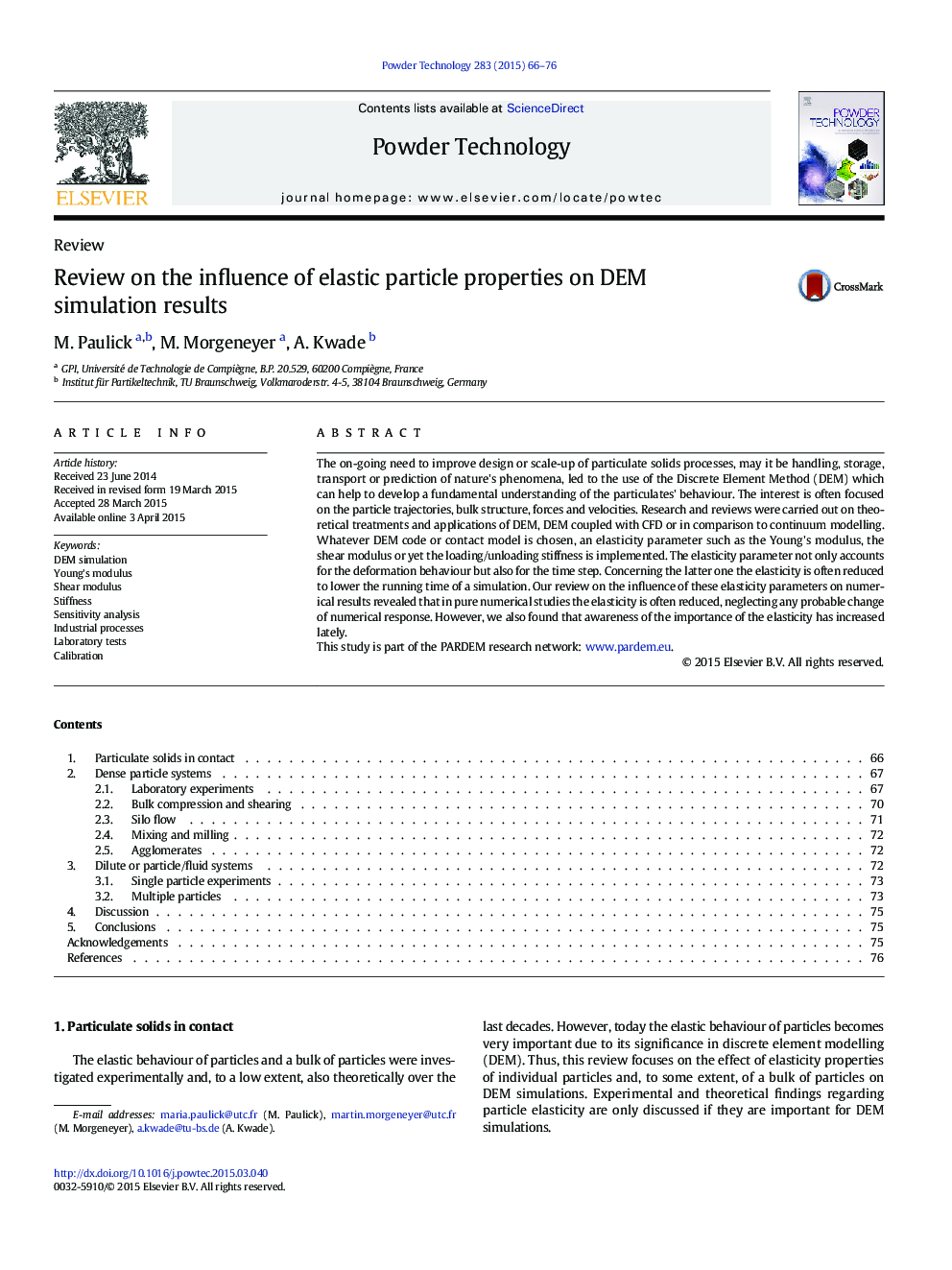| Article ID | Journal | Published Year | Pages | File Type |
|---|---|---|---|---|
| 235394 | Powder Technology | 2015 | 11 Pages |
•Overview of theoretical treatments and applications of DEM in industrial processes•Dense and dilute, static and dynamic processes are investigated.•Influence of elastic parameters on numerical responses, e.g. bulk structure•Proposal of how to apply the elastic parameter in DEM simulation
The on-going need to improve design or scale-up of particulate solids processes, may it be handling, storage, transport or prediction of nature's phenomena, led to the use of the Discrete Element Method (DEM) which can help to develop a fundamental understanding of the particulates' behaviour. The interest is often focused on the particle trajectories, bulk structure, forces and velocities. Research and reviews were carried out on theoretical treatments and applications of DEM, DEM coupled with CFD or in comparison to continuum modelling. Whatever DEM code or contact model is chosen, an elasticity parameter such as the Young's modulus, the shear modulus or yet the loading/unloading stiffness is implemented. The elasticity parameter not only accounts for the deformation behaviour but also for the time step. Concerning the latter one the elasticity is often reduced to lower the running time of a simulation. Our review on the influence of these elasticity parameters on numerical results revealed that in pure numerical studies the elasticity is often reduced, neglecting any probable change of numerical response. However, we also found that awareness of the importance of the elasticity has increased lately.This study is part of the PARDEM research network: www.pardem.eu.
Graphical abstractFigure optionsDownload full-size imageDownload as PowerPoint slide
